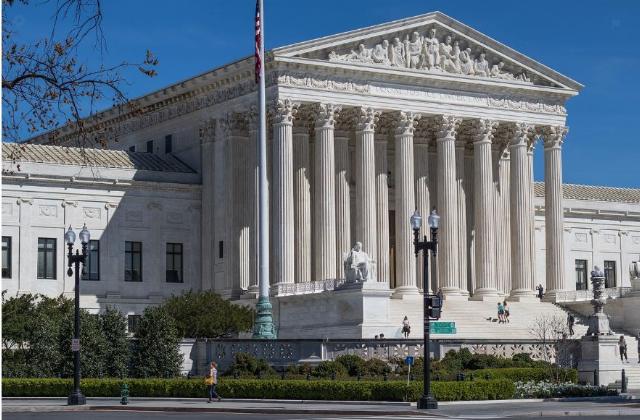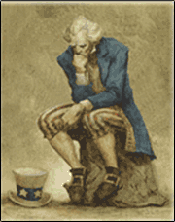How powerful is the Supreme Court?
Per NPR, “the U.S. Supreme Court on Wednesday reined in some of the Trump administration’s sweeping effort to eliminate foreign aid that has been authorized by Congress.”
The thing is, though, that the Executive is a co-equal branch of government. As such, it is permitted to have its own views on what is constitutional — or not. The founders’ view was that the Supreme Court — being a co-equal partner in governance with the president — has not the power to compel executive compliance with any judicial ruling, even its own.
In a letter to William Charles Jarvis, dated September 28, 1820, Thomas Jefferson wrote these words:
[T]o consider the judges as the ultimate arbiters of all constitutional questions [is] a very dangerous doctrine indeed. ... [T]heir power [is] the more dangerous as they are in office for life, and not responsible ... to the elective control. ... [A]ll the departments [are] co-equal and co-sovereign within themselves. If the legislature fails to pass laws ... as prescribed by the constitution ... the judges cannot issue their mandamus [a judicial order] to them; if the president fails to provide the place of a judge ... the judges cannot force him. They can issue their mandamus ... to no executive or legislative officer ... any more than the president or legislature may issue orders to judges or their officers.
John Adams, in the hours before the end of his presidential term, appointed 16 Federalist judges to the circuit courts and 42 to lesser courts. These hastily ratified appointments were called the “Midnight Judges.” Although President Adams had ordered the commissions for these posts to be delivered, the clock ran out on his administration before all the commissions could be dispensed. In one of his first presidential acts, Jefferson canceled delivery of the remaining commissions. As a result, William Marbury would file suit for not being made a federal jurist.
Eventually, the Marshall Court would issue a unanimous ruling, in Marbury v. Madison, declaring that the non-delivery of Marbury’s commission, although in violation of law, had no legal remedy, since the executive was a co-equal branch and not an entity that could be issued a mandamus commanding compliance with judicial opinions.
However, John Marshall declared, in an obiter dictum to Marbury — an opinion bearing only passing relevance to the case — that when a conflict arose between federal law and the Constitution, the Court must side with the Constitution when rendering its decision. He further wrote that the Supreme Court is the superior authority in deciding questions of whether a law is constitutional, setting the Court above the other branches of government.
Lincoln, during his presidency, took the position that the Supreme Court’s decision in the Dred Scott case was against the proposition in the U.S. Constitution that “all men are created equal.” In retrospect, it would appear Lincoln was right.
In a speech supporting his constitutional opinion with respect to Dred Scott, Lincoln quoted President Andrew Jackson:
[T]he opinion of the Supreme court ... ought not to control the co-ordinate authorities of this Government. The Congress, the Executive, and the Court must each for itself be guided by its own opinion of the Constitution. Each public officer, who takes an oath to support the Constitution, swears that he will support it as he understands it, and not as it is understood by others.
In office, Lincoln both rejected and disregarded the Dred Scott ruling, having found it unconstitutional as well as being based on fake history. To wit, Lincoln quoted Judge Curtis’s dissenting opinion:
The Constitution was ordained and established by the people of the United States, through the action, in each State, of those persons who were qualified by its laws to act thereon in behalf of themselves and all other citizens of the State. In some of the States, as we have seen, colored persons were among those qualified by law to act on the subject. These colored persons were not only included in the body of “the people of the United States” — by whom the Constitution was ordained and established; but in at least five of the States they had the power to act, and, doubtless, did act, by their suffrages, upon the question of its adoption.
Lincoln believed it to be important that “government of the people, by the people, for the people, shall not perish from the earth.” In other words, Lincoln did not believe in government of the Judiciary, by the Judiciary, and for the Judiciary. His view was that it was eventually a matter for the people to decide, at the polling place, all matters constitutional.
In the Dred Scott case, the seven justices voting in the majority were Democrats, whereas the two dissenting jurists identified politically as a Whig (Justice Benjamin Curtis) and a Republican (Justice John McLean). Of course, Lincoln, who agreed with the pro–equal rights minority, would not only, in time, free America from an unjust ruling of a racist Democrat majority, but also go on to liberate the slaves of the Democrat-governed South.
During the past century, Democrat-controlled corporatist media have prosecuted the notion that the Judiciary determines the only legitimate interpretation of the U.S. Constitution. In Trump’s America, however, a constitutional restoration of government of, by, and for the people is now underway. It is a state of affairs that Jefferson, Jackson, and Lincoln would certainly condone.
Paul Dowling’s book on the Constitution is Keeping a Free Republic — downloadable for $1.99. Additionally, Paul has contributed to the Independent Sentinel and Free Thought Matters.

Image via Pixabay.





